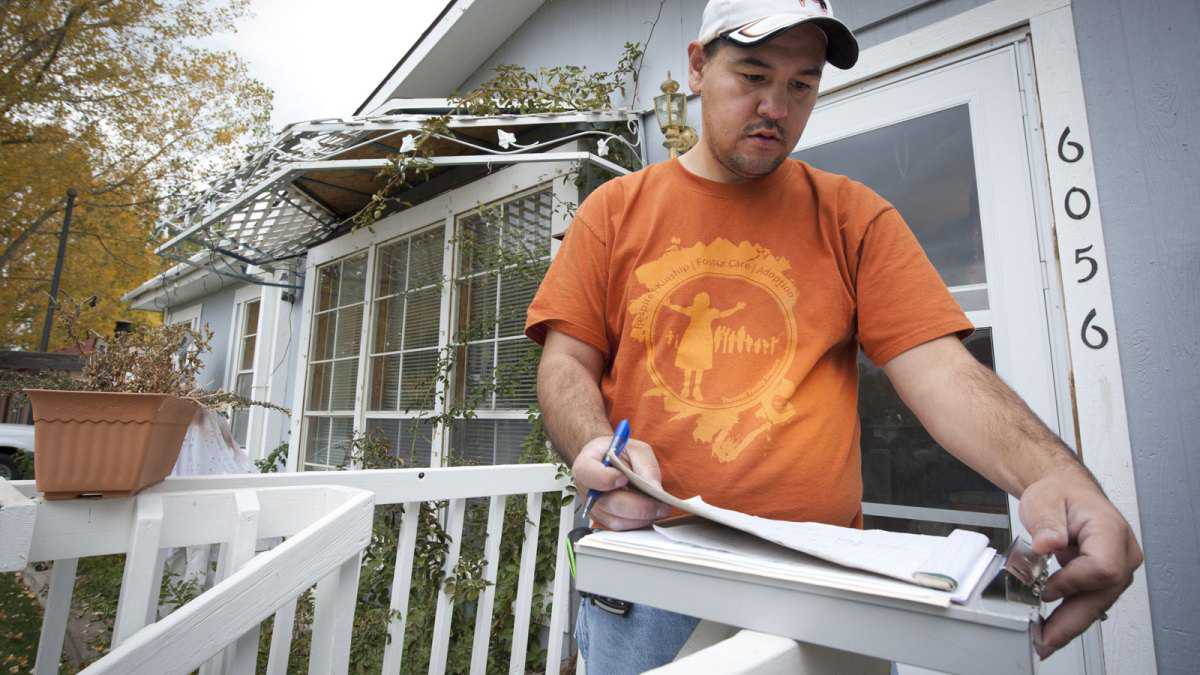Weatherizing your home? Tax credits and rebates can help pay for energy efficiency upgrades

Got drafts? Even small gaps and cracks in walls, floors and door and window frames can make extreme heat or cold an outsized threat to your home’s comfort and condition – not to mention your energy bills.
With more extreme temperatures in the long-term forecast (thanks a lot, climate change) many homeowners may be willing to weatherize their homes but are hesitating over concerns about up-front costs.
Fortunately, a variety of state, federal and other incentives exist to help. The challenge now is simply discovering the ones that apply to you.
Read on for the basics on how to find weatherization incentives near you.
1. Search for weatherization incentives in your area.
Begin your hunt at DSIRE, the N.C. Clean Energy Technology Center’s interactive database of U.S. incentives and policies offered by utilities, states, and the federal government. Though its core focus is on renewable energy and energy efficiency programs, you can browse the available incentives for weatherization-specific incentives.
For example, if you click on the map to select California and then enter “home” or “efficiency” in the search box, you will find the Anaheim utility rebate program that covers duct/air sealing and windows, among other efficiency measures. A similar search for Louisiana will find this program that offers rebates on duct/air sealing, windows, and insulation.
In addition to browsing the DSIRE database, keep an eye out for other incentives to weatherize your home. For instance, several states have sales tax holidays that include Energy Star products.
2. Explore federal tax credits.
While your DSIRE search will turn up a range of federal tax incentives, your best bet for weatherization activities in particular is the Residential Energy Efficiency Tax Credit.
According to the IRS, qualified energy efficiency improvements include energy-efficient exterior windows, doors and skylights; roofs (metal and asphalt); and insulation – excluding installation and labor costs. Here’s more detail from EnergyStar.gov on each of those:
Insulation: The tax credit amount covers up to 10% of the cost, up to $500, of insulation products designed to reduce a home’s heat loss or gain. Common bulk insulation products may qualify, including batts, rolls, blow-in fibers, rigid boards, expanding spray and pour-in-place. Certified products specifically designed to seal cracks and reduce air leaks may also qualify, such as weather stripping, spray foam, caulk and house wrap.
Roofing: This credit for 10% of the cost, up to $500, covers Energy Star-certified metal and asphalt roof products that have pigmented coatings or cooling granules to decrease heat gain.
Windows, doors and lights: Energy Star-certified products in this category qualify for credits of up to 10% of the cost, up to $500 for doors and skylights or $200 for windows. Note that you needn’t replace all the windows, doors or skylights in your home to qualify. In fact, a single new window where there was none previously can still count for this credit.
3. Apply for relevant incentives.
Different state and utility incentives have different application processes, most of which are clearly stated on the program websites you’ll find via DSIRE. The federal tax break, however, is your typical IRS form, which you can find here:
Form 5695 Instructions
Form 5695
4. Find a licensed contractor with experience in energy efficiency.
Although the federal tax break doesn’t apply to installation, other incentives may. Some utilities provide lists of preferred contractors who have demonstrated they have the skill sets and product knowledge particular to efficiency and Energy Star installations.
A qualified contractor may also be able to help you navigate the rebate and other incentive options in your area. Some will even handle the paperwork on the rebate for you; in fact, some programs require that they do – a non-licensed homeowner performing their own installation and paperwork may not qualify. Just be sure to read the fine print before making any bold moves.
Bottom line: The federal tax credit and other incentives can help you perform weatherization updates in your home. By participating in such a program and taking decisive action to protect your home and reduce your energy bills, you’ll also be doing your part on climate change.
Tags :
Previous Story
- Frasers Group reports drop in full-year revenue, profit...
- Leading trade bodies welcome tax cuts
- Political economy analysis of tax reforms
- Fresh new tax facilities sought for tiny, medium...
- A Grand Compromise: Tourism Lobby And Grand County...
- Rolls-Royce plunges in to the red with £4...
- Graduates struggling to secure employment
- Tourism report shows travel expenditures in Arkansas during...